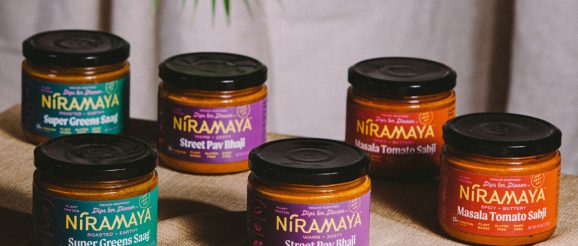Niramaya Foods using dips to deliver traditional Indian innovation

NEW YORK — Mehek Khera launched Niramaya Foods Indian-based dips in September 2022 to provide consumers with heritage inspired nutrition while meeting modern needs. “These recipes are my great grandmothers and are rooted in (Indian) culture, but are also plant forward with spices,” Khera said. “By modern needs I mean that when I came to the US, I really didn’t get the time to sit down and make full blown Indian meals. I was always on the go between colleges, universities, and jobs.” Niramaya Foods products are distributed in the specialty food channel at retailers like Sprouts Farmers Markets. The products are formulated using vegetables, spices and cashews. The dips come in three flavors: street pav bhaji, masala tomato sabji, and super greens saag. “We have strong attributes to make a valid case to be in two grocery store categories,” Khera said. “Our Indian flavors make us a perfect addition to the Indian foods aisle whereas our scoop-and-serve dippable product make it a perfect addition to the shelf stable dip space.” Khera noted her brand looks at different characteristics when it comes to its core consumers. “Rather than it being really narrow focused on something like a female consumer that’s (a) 32-year-old and works in corporate, we like to say our consumers like to shop (at) … brands like Whole Foods,” she said. “Target shoppers are (also) very aligned with the shoppers that we service primarily because they (Target) can be the primary choice for a family to shop and do their weekend errands. The customer is a little bit open to a slightly premium price point and looks for global flavors (and) exciting flavors for mealtime or snacking. I do feel like Target shoppers are also aligned with our needs, but we are very focused on natural channels for 2024.” Through the dips, Khera wanted to offer consumers a marriage of cultures. “In Indian culture, dips are not common but dipping is because when we eat bread, we break the bread in bite size pieces and dip it,” Khera said. “In the US, dipping is so-called snacking so I found that healthy intersection where we would be able to share these flavors in a format that America is used to.” Khera said while the recipes were inspired by her great grandmother, they are common in India. “They’re not just my family’s, every family has their own version of these recipes,” she said. “These are some things that millions of Indians enjoy every day in their own homes where the mom or grandmother is cooking.” Niramaya Foods focuses its go-to-market strategy on finding an intersection of heritage inspired nutrition. “Once we are convinced we have found that (intersection), we are going to launch DTC (direct-to-consumer) to test out the market,” Khera said. “I live in New York City so that in itself has given me the opportunity to go to a lot of events and festivals where we get a lot of feedback from them (consumers).” Khera said she believes the US consumer has been alienated from true Indian cuisine. “Especially the Midwest where there aren’t a lot of Indian restaurants in some places, and there aren’t a lot of Indian populations,” she said. “So, all people know (about) Indian foods is tikka masala and butter chicken, which is delicious (but) it also is something that originated as a result of the combination of British and Indian cultures, which does not represent the entirety of homestyle Indian cuisine. This is why the company is doing what we’re doing.” Niramaya Foods manufactures its products in the United States. “We also source from local farms around our manufacturing facility, especially the West Coast,” Khera said. Khera’s strategy in 2024 is to continue building out the business steadily. “We really want to improve velocities in 2024, consistent velocities, and raise our growth plan sometime in 2025 to expand into newer product lines … as well as grow our company,” she said. “I’m a solo entrepreneur right now so I would love to have a core team at some point when that plan makes sense. I really see the bigger expansion in 2025 and beyond.” Enjoying this content? Learn about more disruptive startups on the Food Entrepreneur page .
